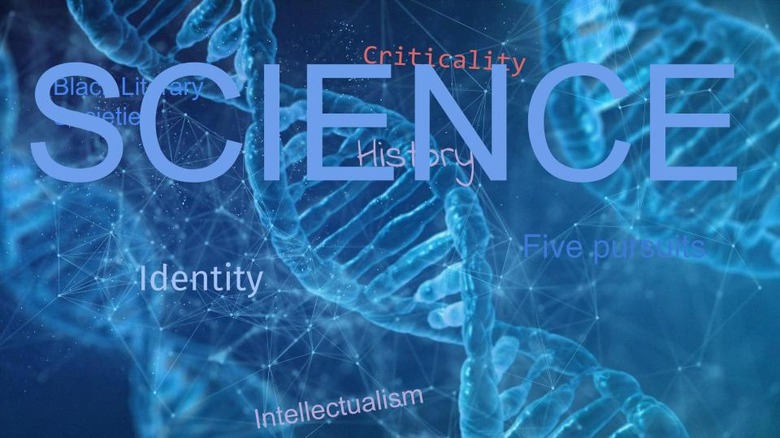- Author:
- The genius group from Madison Wisconsin
- Subject:
- Astronomy, Character Education, Reading Informational Text, Reading Literature, Ancient History, World Cultures
- Material Type:
- Lesson
- Level:
- Upper Primary
- Tags:
- License:
- Public Domain Dedication
- Language:
- English
- Media Formats:
- Audio, Downloadable docs
Education Standards
Constellations from Africa
Constellation Survey_Research Questions
template for cultural constellation research page (make copies)
fifth grade Cultivating Genius framework science: Constellations: A Global Perspective

Overview
Details: This lesson can be added to 5th Grade Amplify Patterns of Earth and Sky: Analyzing Stars on Ancient Artifacts, with Lesson 2.1 after looking for patterns, making observations, and reflecting on the Model.
Pursuits addressed:
Identity-Students will learn about constellations from their own cultural perspectives and recognize that people from all over the world have stories related to the stars in the sky.
Skills-The students will research constellations from a cultural perspective and create a class book to share with the rest of the school about constellations and their stories from around the world.
Intellect-Students will interview their families to find out if their families have any constellation stories or information related to their cultures.
Criticality- Students will understand that there are more than Greek and Roman names and stories for the constellations. The stories are told and retold by those in power.
Constellations: A Global Perspective
Lesson Overview (Time est) | Pursuits addressed: Identity-Students will learn about constellations from their own cultural perspectives and recognize that people from all over the world have stories related to the stars in the sky. Skills-The students will research constellations from a cultural perspective and create a class book to share with the rest of the school about constellations and their stories from around the world. Intellect-Students will interview their families to find out if their families have any constellation stories or information related to their cultures. Criticality- Students will understand that there are more than Greek and Roman names and stories for the constellations. The stories are told and retold by those in power. Details: This lesson can be added to 5th Grade Amplify Patterns of Earth and Sky: Analyzing Stars on Ancient Artifacts, with Lesson 2.1 after looking for patterns, making observations, and reflecting on the Model. Driving Question for Investigation 2.1:What causes the daily pattern of when we see the sun and other stars?
Lesson Snapshot
Possible Research sources: Constellation Finder A guide to patterns in the night sky with star stories from around the world by Dorcas S. Miller, Nature Study Guide Publishers, 2005 Nativeskywatchers.com (website) Talking Sky by Carl Gawboy and Ron Morton, Rockflower Press, Jan. 1, 2014 Learning Performances Students will research and write about stars and constellations from various cultural perspectives. Building toward PE Students will research and gather information by asking questions about constellations (systems) to support representing data in graphical displays to reveal patterns of daily changes in length and direction of shadows, day and night, and the seasonal appearance of some stars in the night sky. Integration of Knowledge and Ideas: CCSS.ELA.RI.5.7 Draw on information from multiple print or digital sources, demonstrating the ability to locate an answer to a question quickly or to solve a problem efficiently. Research to Build and Present Knowledge: CCSS.ELA-Literacy.W.5.7 Conduct short research projects that use several sources to build knowledge through investigation of different aspects of a topic. Writing: CCSS.ELA-LITERACY.W.5.4 Produce clear and coherent writing in which the development and organization are appropriate to task, purpose, and audience. | |||
Materials and Prep |
| |||
Lesson Component | How to Implement | |||
What are kids figuring out? | Students figure out that constellations have many names and stories from various cultures. Look Fors 1. Look for students finding key details in the text about constellations from African cultures. 2. Look for students answering survey questions or researching to find information about constellations from cultures that they can relate to or interest them. | |||
1 Introduction (15 min) | Engaging with Phenomenon and DQ, “What are some constellations and stories related to the constellations from other countries?
Supporting Student Discourse: In whole class discussions, support students to do the following: listen to the ideas of others carefully, ask questions to check their understanding of others’ comments, explain their own ideas and understanding clearly, and build on one-another’s ideas. | |||
2 Activity (25 min) |
Possible cultural constellation research resources (in case students were unable to complete the family survey): Constellation Finder A guide to patterns in the night sky with star stories from around the world by Dorcas S. Miller, Nature Study Guide Publishers, 2005 Nativeskywatchers.com (website) Talking Sky by Carl Gawboy and Ron Morton, Rockflower Press, Jan. 1, 2014 | |||
3 Wrap Up (10 min) | Exploring the pursuits within the lesson
| |||
extensions |
| |||
Formative Assessment | Look Fors 1. Look for students researching and writing about constellations from cultures that are meaningful to them . 2. Look for students understanding key details from the text and writing in a clear and concise manner. Evidence Statement Student research will demonstrate that there are more stories about the stars from various cultures than the ones that currently 'dominate the western landscape'. | |||
| | Suggested Prompts
| ||